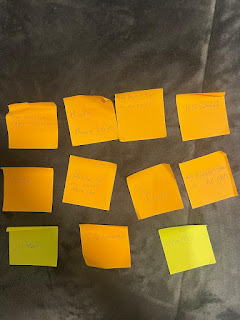Our Fears
During this whole semester I decided to make my projects about an specific topic which our fears and mental health and something more which is to proof that everyone can be an artist, this two things was something that I always thought since I decided to focus my career and my life on art, since one of my biggest weaknesses are my fears it was something that always was behind me and making me to doubt about my skills in art, even on my social skills too making me feel like I’m not able to do a lot of stuff that I always wanted to but at some point of my life I started fighting with it and proving myself that I actually can do any project that I want and the unique thing that is stopping me to do it it’s me my fears was something that it being affecting me since I was little and when I started growing I decided to use it for my projects and starting feeling that I’m strong and I can deal with it and I want to share it with everybody, share that we can use our fears and we have an artistic side even if we are not professionals of it so that’s why my project name is “Our Fears” which is about as I mentioned before is using our fears for our own benefits as I do I want to open people’s eyes and proof them that everybody is strong and we can do whatever we want and the unique thing that is stopping us it's literally ourselves, now telling people that they can do it it’s not going to work with just telling them because usually people don’t think that they can actually do it so I decided to help them in an easy way to show them how to deal with their fears and make them see that everybody is really talented and creative, so my method was going around Bayonne “The city where I live” with some notepads and asking every person that was around me to write their biggest fear and after that put on any part of my body the reason to put it on my body was to make it eye catching so everybody would ask about it and they would like to try it too so the unique way to make them participate on it was to do something different and something that can really catch attention easily, after I collected all the notes that I can I went home and decided to create an art piece with their fears something representative and very cool for it showing the meaning of our fears and what we can do with them like this art piece and I couldn’t even make it without people’s fears so this art piece was not only mine, it was from everyone.
I liked
making this project since I saw so many people had almost the same fears that I
have and that was something that was impressive to me, making me see that we
are not alone and all pf pus pass almost for the same problems in any way. For this
project I took inspiration from Yoko Ono’s performance “Cut Piece” which was
making all the audience participate in the presentation and for me was
something very impressive on the way she decided to connect with her public. Another
inspiration that I took from was the Guerrilla Girls on the way they make to
catch people’s attention in a creative way and making the public join them to share
the message. Other performance that I found very interesting was “Marina Abramović’s cuts, slaps and whips to
conquer pain” which for me is something extreme but it’s something very impressive
which was hurting herself proving that the physical damage can be very painful
but not as much as mental pain which I found very deep and very impressive. I
used Ladies of Midnight Blue as inspiration too from the way how they catch
people’s attention playing instruments something that it is very catchy and making
them listen maybe my way is way different than theirs, but I like the way how
they use their creativity. And the last person that I took inspiration from was
Kerry James Marshall’s “A portrait of the Artist As a Shadow of his
former self” the way how he represents himself as something “creepy” I found myself
identified and even more for this project since it is about the fears and use
them for an art piece and one of my fears it’s the mistakes that I made in the
past. As my major is graphic design maybe can be tricky to thing if this
project can be part for my portfolio but the designs that I decided to make are
useful since it is sharing deep messages with my art which is basically one of
the main things about graphic design.









